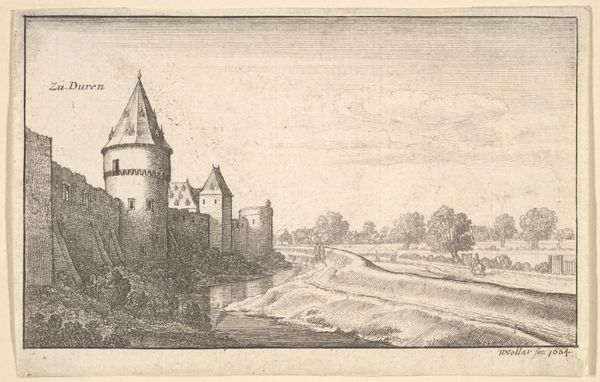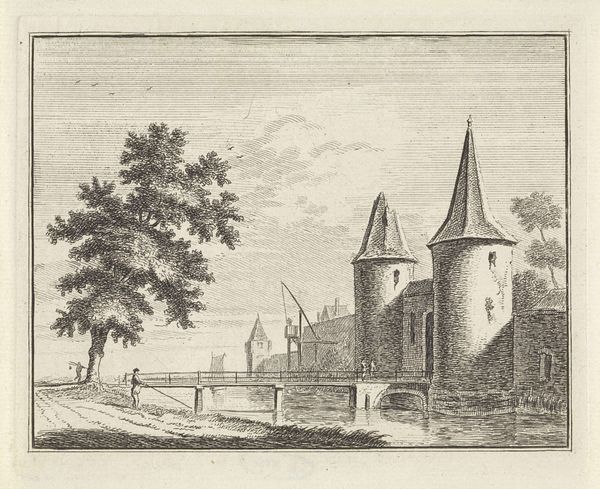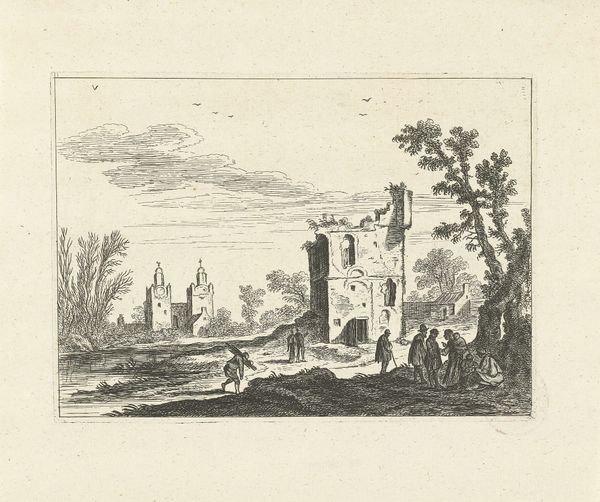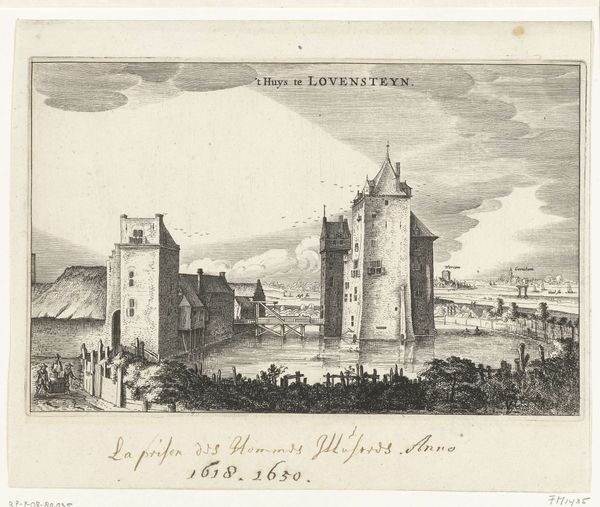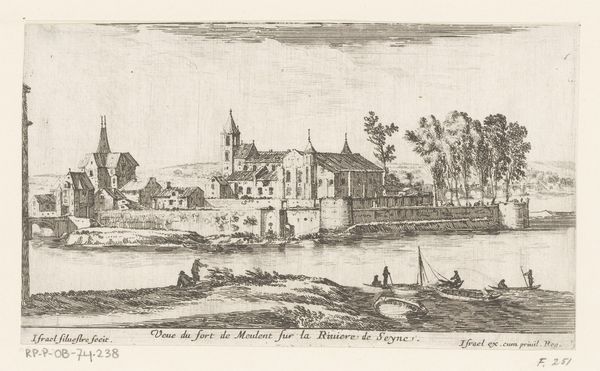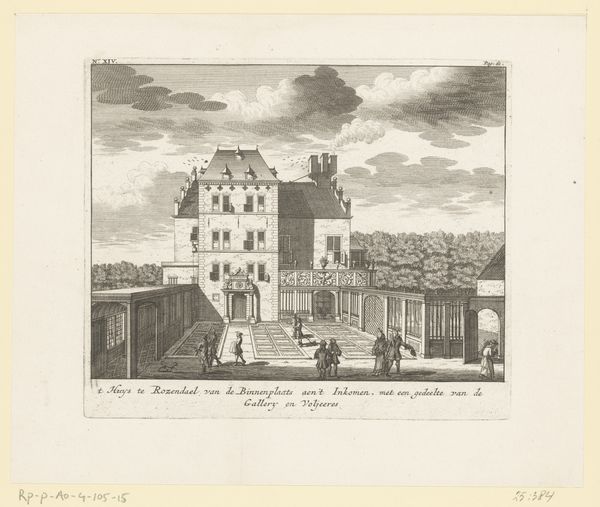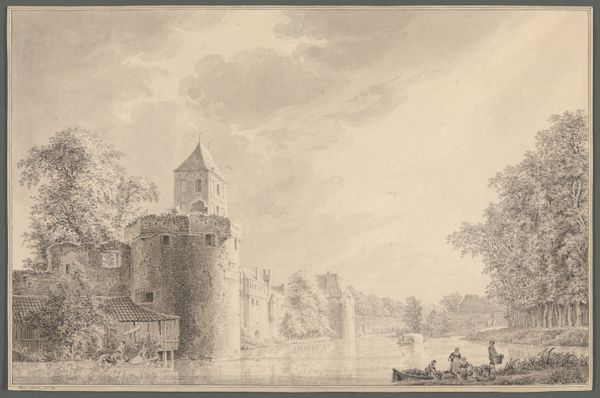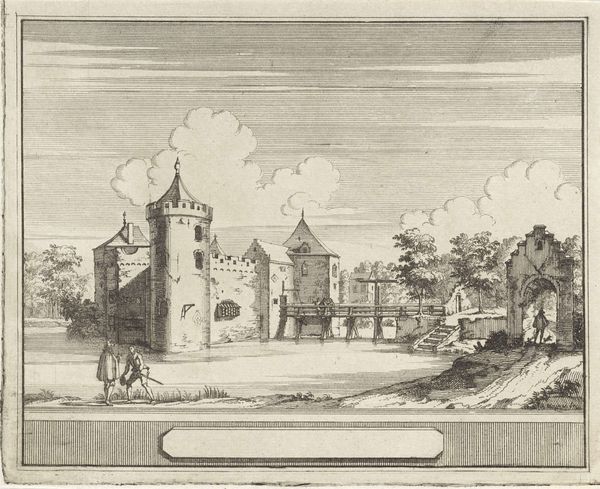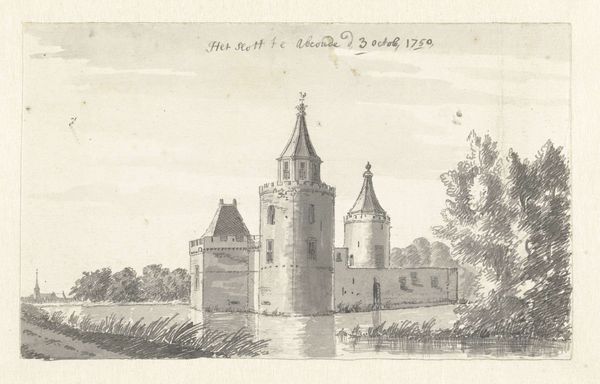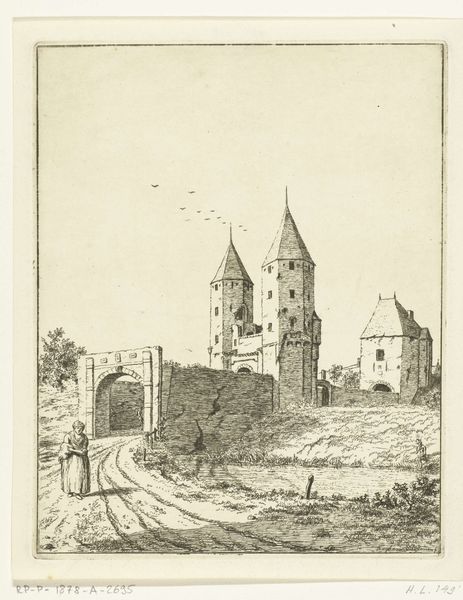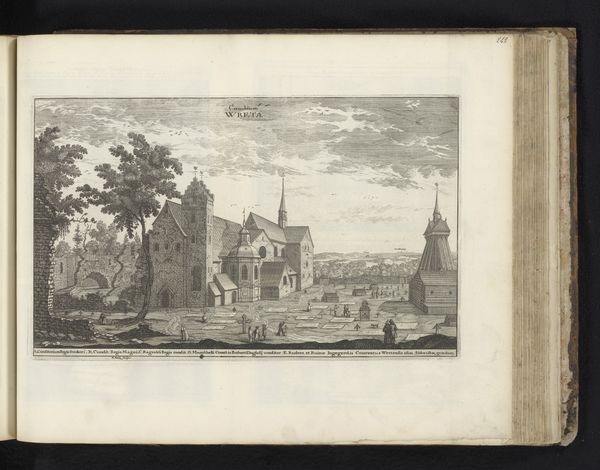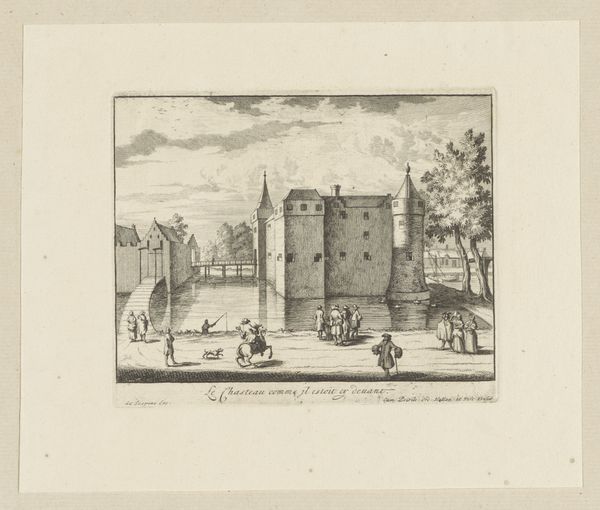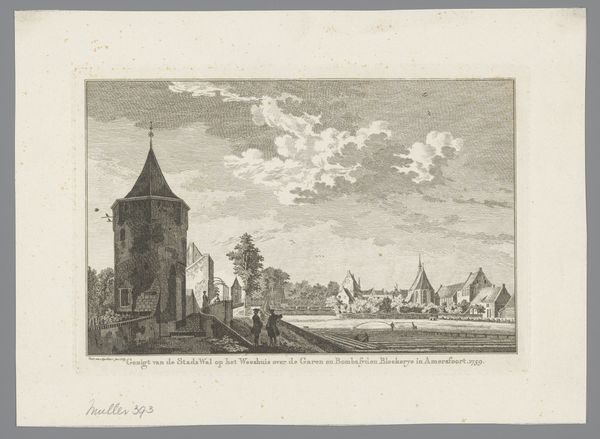
Dimensions: height 164 mm, width 208 mm
Copyright: Rijks Museum: Open Domain
Curator: Here we have Hendrik Spilman's "Gezicht op de Plompetoren te Utrecht," dating roughly between 1773 and 1792. It’s an engraving, currently residing here at the Rijksmuseum. What are your first impressions? Editor: Well, it’s so precise! Almost painfully so. It's like the architect couldn’t bear to leave out a single brick. There’s a stillness about it, like a frozen memory. Does it strike you as almost mournful? Curator: It certainly has a measured quality. Topographical prints like this one served a practical function. They documented the appearance of structures, of course. Editor: Documented, yes, but it's the feeling, the very particular melancholic light – I think it tells us as much about the soul of the city, a sort of swan song. See how that figure stands gazing at the water – or rather, at the image reflected in it, as if considering what might be found there? It might mean anything, but I can’t help imagining him pondering what’s been lost. Curator: The loss you perceive may stem from knowing the tower was demolished in the early 19th century. These prints became valued historical records quite quickly. Their social purpose changed as Utrecht's city limits transformed; their aesthetic purpose also shifted with changes in visual arts preferences, but, yes, it’s certainly bittersweet. Editor: It’s funny how an image designed for posterity inadvertently becomes an elegy. But let’s be fair: look at how confidently Spilman places the buildings on the horizon and foreground, then he invites us, as viewers, to see the space with this character. It's technically amazing, but this figure invites a bit of self-awareness from the person doing the viewing. A person stands, but one will stand where that person stands in years to come. That creates all the difference. Curator: True. It underscores how these cityscapes performed cultural work; not just mirroring but actively shaping how people perceived their changing environment, making that "before" state present for later "after" assessments. It has become an artwork and something worth study. Editor: I agree wholeheartedly. The scene is just as beautiful as the idea that Spilman may have not known it would endure like this. This print invites us not only to observe history but also to consider our place within it.
Comments
No comments
Be the first to comment and join the conversation on the ultimate creative platform.
